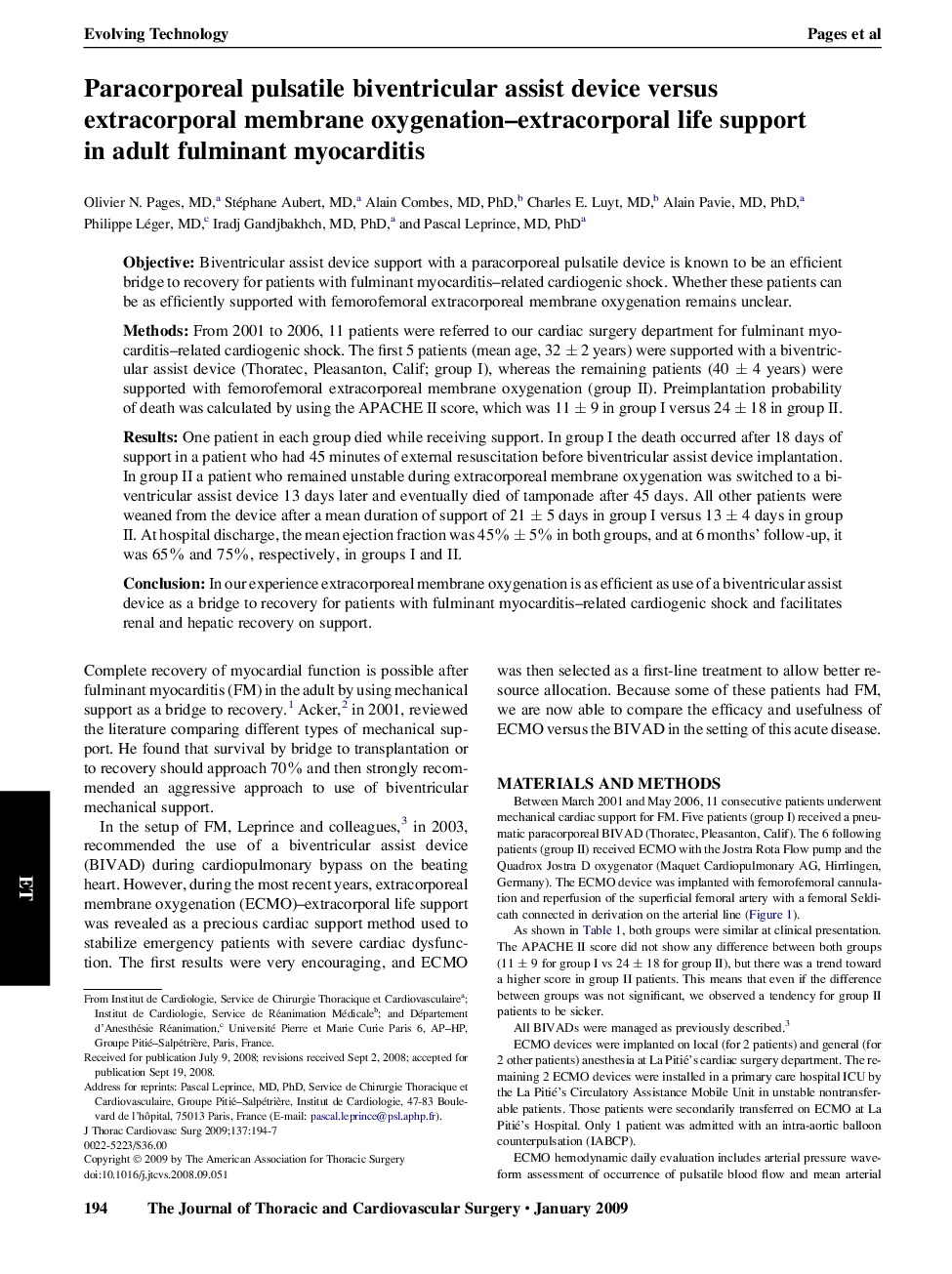| کد مقاله | کد نشریه | سال انتشار | مقاله انگلیسی | نسخه تمام متن |
|---|---|---|---|---|
| 2982010 | 1578678 | 2009 | 4 صفحه PDF | دانلود رایگان |

ObjectiveBiventricular assist device support with a paracorporeal pulsatile device is known to be an efficient bridge to recovery for patients with fulminant myocarditis–related cardiogenic shock. Whether these patients can be as efficiently supported with femorofemoral extracorporeal membrane oxygenation remains unclear.MethodsFrom 2001 to 2006, 11 patients were referred to our cardiac surgery department for fulminant myocarditis–related cardiogenic shock. The first 5 patients (mean age, 32 ± 2 years) were supported with a biventricular assist device (Thoratec, Pleasanton, Calif; group I), whereas the remaining patients (40 ± 4 years) were supported with femorofemoral extracorporeal membrane oxygenation (group II). Preimplantation probability of death was calculated by using the APACHE II score, which was 11 ± 9 in group I versus 24 ± 18 in group II.ResultsOne patient in each group died while receiving support. In group I the death occurred after 18 days of support in a patient who had 45 minutes of external resuscitation before biventricular assist device implantation. In group II a patient who remained unstable during extracorporeal membrane oxygenation was switched to a biventricular assist device 13 days later and eventually died of tamponade after 45 days. All other patients were weaned from the device after a mean duration of support of 21 ± 5 days in group I versus 13 ± 4 days in group II. At hospital discharge, the mean ejection fraction was 45% ± 5% in both groups, and at 6 months' follow-up, it was 65% and 75%, respectively, in groups I and II.ConclusionIn our experience extracorporeal membrane oxygenation is as efficient as use of a biventricular assist device as a bridge to recovery for patients with fulminant myocarditis–related cardiogenic shock and facilitates renal and hepatic recovery on support.
Journal: The Journal of Thoracic and Cardiovascular Surgery - Volume 137, Issue 1, January 2009, Pages 194–197